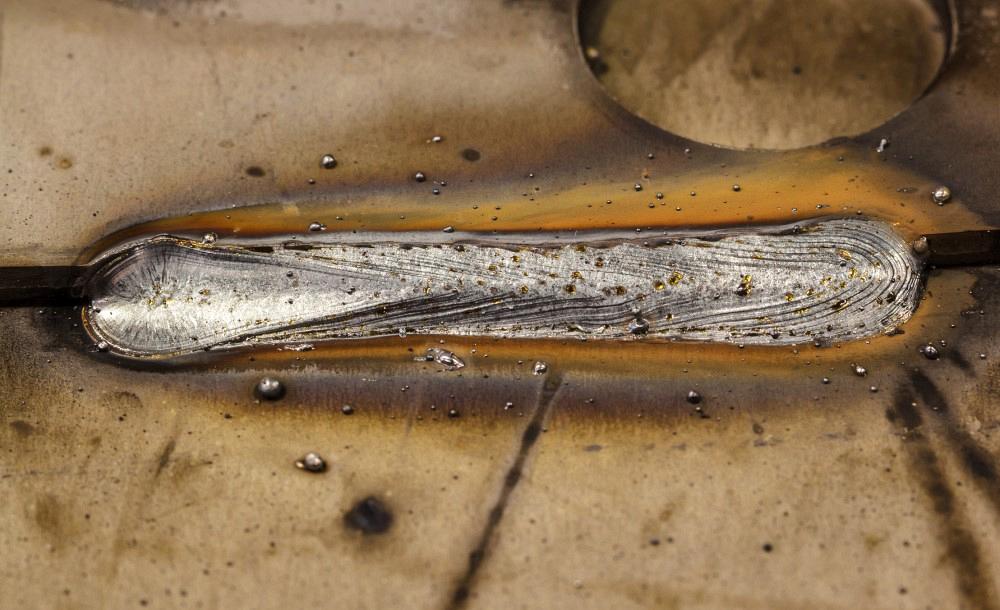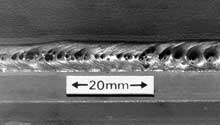The Science Behind Porosity: A Comprehensive Overview for Welders and Fabricators
Comprehending the elaborate mechanisms behind porosity in welding is essential for welders and fabricators aiming for remarkable craftsmanship. From the make-up of the base products to the details of the welding procedure itself, a multitude of variables conspire to either intensify or alleviate the existence of porosity.
Recognizing Porosity in Welding
FIRST SENTENCE:
Exam of porosity in welding discloses important understandings right into the stability and quality of the weld joint. Porosity, defined by the visibility of dental caries or spaces within the weld metal, is an usual concern in welding procedures. These spaces, otherwise appropriately addressed, can compromise the architectural stability and mechanical homes of the weld, bring about potential failings in the completed item.

To find and evaluate porosity, non-destructive screening approaches such as ultrasonic testing or X-ray examination are commonly employed. These methods allow for the identification of internal issues without compromising the stability of the weld. By examining the dimension, shape, and circulation of porosity within a weld, welders can make informed decisions to boost their welding procedures and accomplish sounder weld joints.

Aspects Influencing Porosity Formation
The event of porosity in welding is influenced by a myriad of factors, varying from gas protecting efficiency to the complexities of welding specification setups. One vital factor adding to porosity development is poor gas shielding. When the shielding gas, commonly argon or carbon dioxide, is not efficiently covering the weld pool, atmospheric gases like oxygen and nitrogen can infect the molten steel, causing porosity. In addition, the cleanliness of the base products plays a considerable role. Pollutants such as rust, oil, or dampness can vaporize throughout welding, creating gas pockets within the weld. Welding criteria, consisting of voltage, present, travel rate, and electrode kind, likewise effect porosity formation. Utilizing improper settings can create extreme spatter or warm input, which subsequently can lead to porosity. Additionally, the welding technique utilized, such as gas steel arc welding (GMAW) or protected steel arc welding (SMAW), can influence porosity development as here are the findings a result of variants in warm circulation and gas coverage. Understanding and regulating these elements are necessary for decreasing porosity in welding procedures.
Effects of Porosity on Weld High Quality
Porosity formation considerably endangers the architectural stability and mechanical residential properties of welded joints. When porosity is existing in a weld, it develops spaces or cavities within the material, decreasing the total stamina of the joint. These gaps act as stress and anxiety concentration factors, making the weld more at risk to splitting and failure under load. The existence of porosity likewise compromises the weld's resistance to corrosion, as the caught air or gases within deep spaces can respond with the surrounding atmosphere, causing degradation with time. Additionally, porosity can impede the weld's capability to stand up to pressure or effect, additional threatening the total top quality and reliability of the bonded structure. In crucial applications such as aerospace, auto, or structural constructions, where security and durability are paramount, the detrimental effects of porosity on weld high quality can have Clicking Here severe effects, stressing the relevance of reducing porosity with appropriate welding strategies and treatments.
Strategies to Decrease Porosity
Additionally, utilizing the proper welding parameters, such as the proper voltage, present, and take a trip speed, is crucial in preventing porosity. Preserving a consistent arc length and angle throughout welding likewise assists lower the likelihood of porosity.

Making use of the ideal welding technique, such as back-stepping or utilizing a weaving motion, can also assist distribute warmth equally and decrease the possibilities of porosity development. By implementing these methods, welders can effectively decrease porosity and generate top quality welded joints.

Advanced Solutions for Porosity Control
Executing innovative modern technologies and innovative methods plays a pivotal role in attaining exceptional control over porosity in welding procedures. Furthermore, using sophisticated welding methods such as pulsed MIG welding or customized atmosphere welding can also help alleviate porosity concerns.
An additional advanced service entails using advanced welding equipment. Making use of devices with built-in features like waveform control and advanced power resources can improve weld top quality and reduce porosity dangers. Additionally, the application of automated welding systems with accurate control over parameters can dramatically view it reduce porosity problems.
Furthermore, integrating advanced monitoring and evaluation modern technologies such as real-time X-ray imaging or automated ultrasonic screening can help in finding porosity early in the welding process, permitting immediate rehabilitative activities. Overall, incorporating these advanced services can considerably boost porosity control and improve the general quality of bonded parts.
Final Thought
In conclusion, understanding the scientific research behind porosity in welding is essential for welders and fabricators to produce premium welds - What is Porosity. Advanced remedies for porosity control can better improve the welding procedure and guarantee a strong and trustworthy weld.